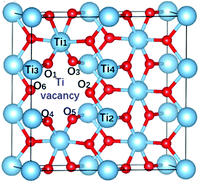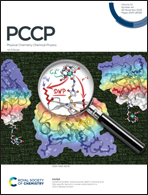The magnetism of titanium-defected undoped rutile TiO2: first-principles calculations
Abstract
The physicochemical properties of TiO2 are largely dependent on the defects. Here, using first-principles calculations, we report a systematic investigation of the magnetic properties of Ti-defected rutile TiO2 systems. The results of our calculations show that the VTi concentration can significantly affect the size of the magnetism, and that the magnetism weakens with decreasing VTi concentration. Studies of phonon dispersion curves show that systems with lower VTi concentrations of 8.33% and 6.25% are kinetically stable. Further detailed calculations on the Ti11O24 system indicate that the magnetism mainly originates from four of the six nearest-neighbor O atoms to the Ti vacancy, but much less from the other two. The magnetic ground states are discussed, and the results show that for the Ti11O24 system, the ferromagnetic (FM) state of the four nearest-neighbor O atoms to the Ti vacancy is the magnetic ground state, and for the Ti22O48 system, the FM state of the two vacancies is the magnetic ground state. In addition, our calculations also indicate that the magnetic properties of Ti-defected TiO2 can be tuned via strain engineering. In general, this metal-defected TiO2 represents a novel kind of semiconductor. Research into the magnetic properties reported in this paper can enrich theoretical knowledge in this area and provide more potential candidates for TiO2-based materials.



 Please wait while we load your content...
Please wait while we load your content...